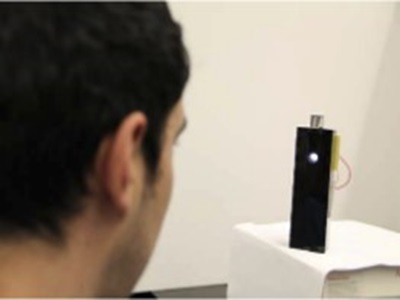Self-Administered Critical Flicker Frequency Test
This innovation is a portable, self-administered Critical Flicker Frequency (CFF) test designed for screening neurological conditions like Minimal Hepatic Encephalopathy. By making the test more accessible and affordable, it opens up avenues for more widespread screening and monitoring of MHE and other neurological conditions.

What is the Problem?
Critical flicker frequency (CFF) testing measures the ability of an observer to distinguish a blinking light from a continuous light. The flicker frequency at which the observer cannot tell the light is blinking can be used to screen for minimal hepatic encephalopathy (MHE), a condition associated with liver cirrhosis that can lead to impaired driving and reduced quality of life.
Existing methods for detecting MHE are time consuming, prone to bias from several sources, and is inappropriate for long-term monitoring. In addition, methods of conducting CFF testing to screen for MHE involve the use of expensive, high-skill equipment that is often unavailable at clinics, let alone for self-administered testing. However, given the effectiveness of identifying MHE using CFF testing and the straightforward principles of conducting the CFF test, there is an opportunity for the creation of much simpler and easier to use equipment for administering this test.
What is the Solution?
The solution is a portable, self-administered Critical Flicker Frequency (CFF) test that pairs with a companion app on a mobile device. The test was developed with software engineers from UW and a leading hepatologist from the VA. The technology utilizes an external light source. This eliminates the need for a traditional viewing box or a skilled operator. The LED emits light at varying frequencies, ranging from 25 Hz to 60 Hz. This procedure is conducted 6 to 8 times, with the results averaged to provide the outcome. This approach makes the CFF test more accessible and user-friendly, allowing for more widespread use of CFF as a screening tool.
What is the Competitive Advantage?
Accessibility: The device is designed to integrate with mobile phones, making it easily usable by non-experts.
Accuracy: With an ability to correctly identify 79% of those without the disease, the test is good for discriminating between those with and without MHE. And can provide an indication of relative MHE function on a particular day.
Affordability: The device's compact design makes the device as a whole cost effective.
Applicability: In addition to MHE, CFF screening shows promise for many other neurological conditions including cerebro-organic syndromes, multiple sclerosis, Alzheimer’s disease, and chronic fatigue
Portability: The device's compact design allows for easy transport and use in everyday homes or offices.
-
expand_more mode_edit Authors (1)James Fogarty
-
expand_more library_books References (1)
- Ravi Karkar, Rafal Kocielnik, Xiaoyi Zhang, James Fogarty, George N. Ioannou, Sean A. Munson, Jasmine Zia (2016-09-12), Toward a portable self-administered critical flicker frequency test, Proceedings of the 2016 ACM International Joint Conference on Pervasive and Ubiquitous Computing: Adjunct, 1194–1199
-
expand_more cloud_download Supporting documents (0)